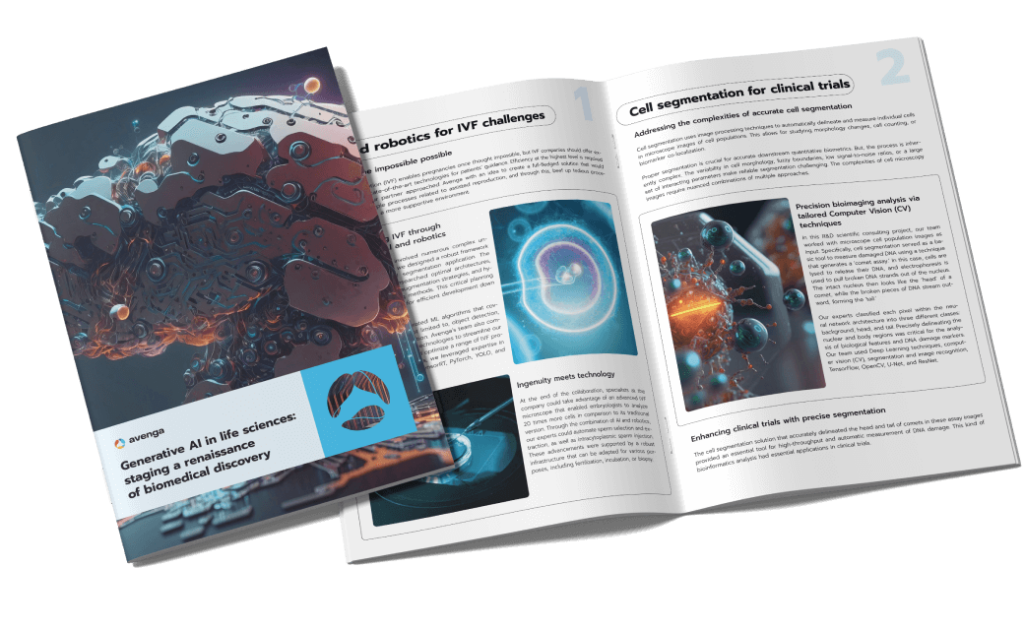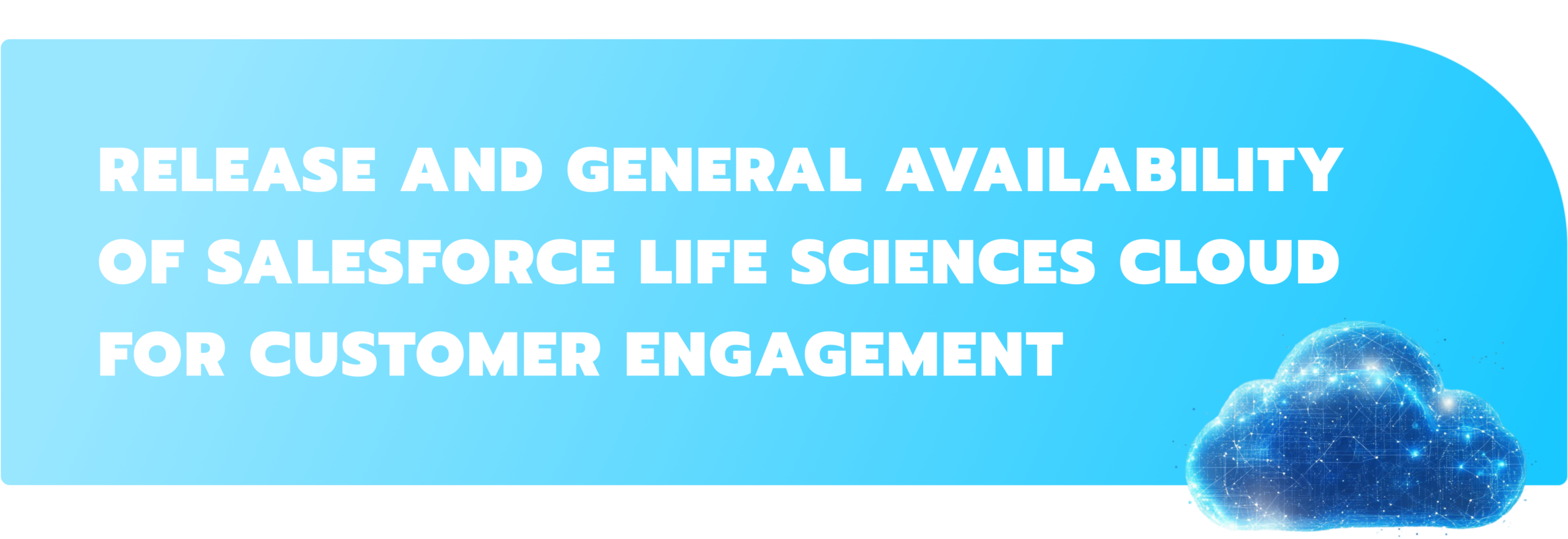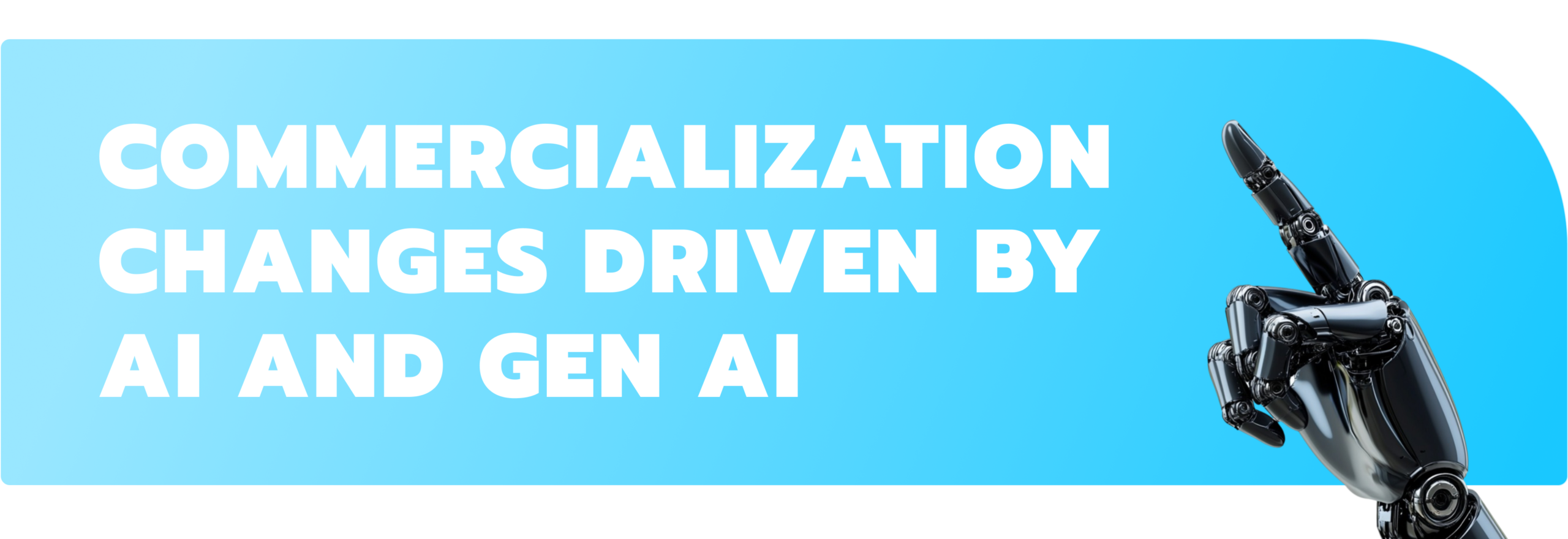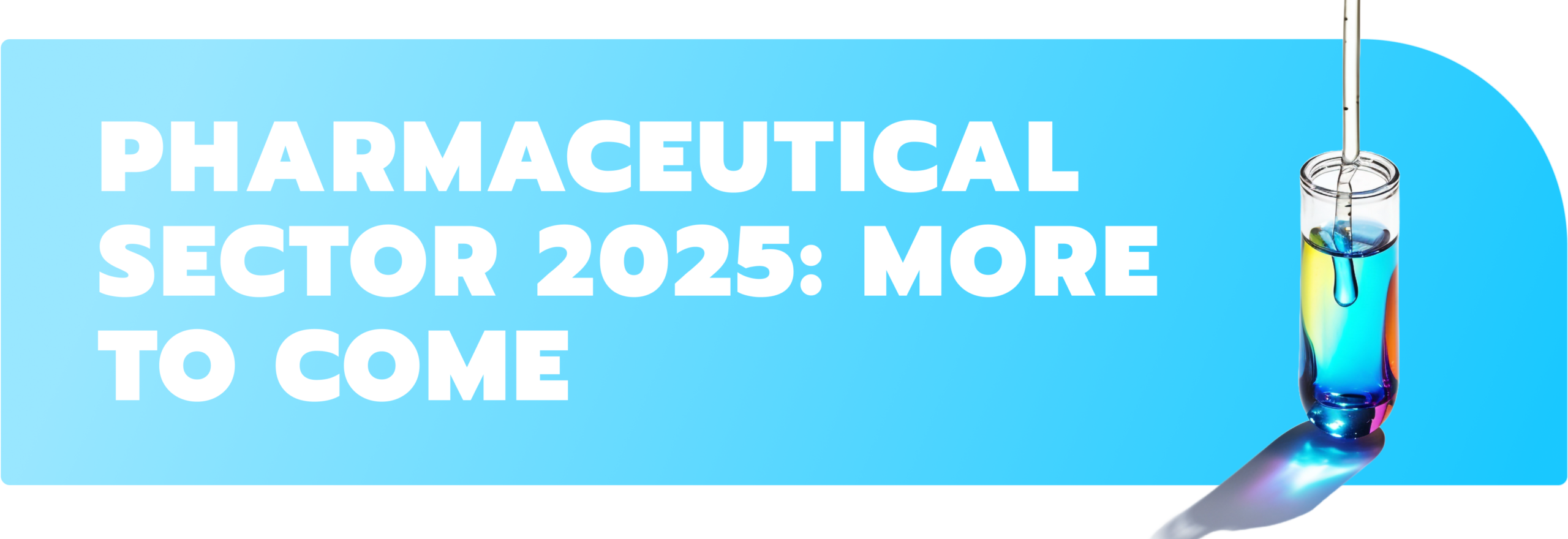AI has become the talk of the town, no matter the industry. Recent advancements in this technology have turned the impossible into reality. It enables human experts to focus on the most critical, high-value tasks while delegating mundane work to smart technology, unlocking new growth opportunities and accelerating time to market. This is supported by evidence. New use cases made possible by AI have the potential to greatly enhance production KPIs, resulting in increases of up to 10% in time to market and up to 25% in revenue. Another resource says AI is now being used for drug discovery by 80% of specialists in the pharmaceutical and life sciences industries. Further, by the end of 2025, pharmaceutical businesses may generate between $350 billion and $410 billion in value annually from AI applications.
Delve deeper to uncover the key trends shaping the future of the pharmaceutical industry. Explore how new technology trends are helping to overcome significant challenges. Let’s take a peek behind the curtain to discover what biopharma companies will be up to in 2025.
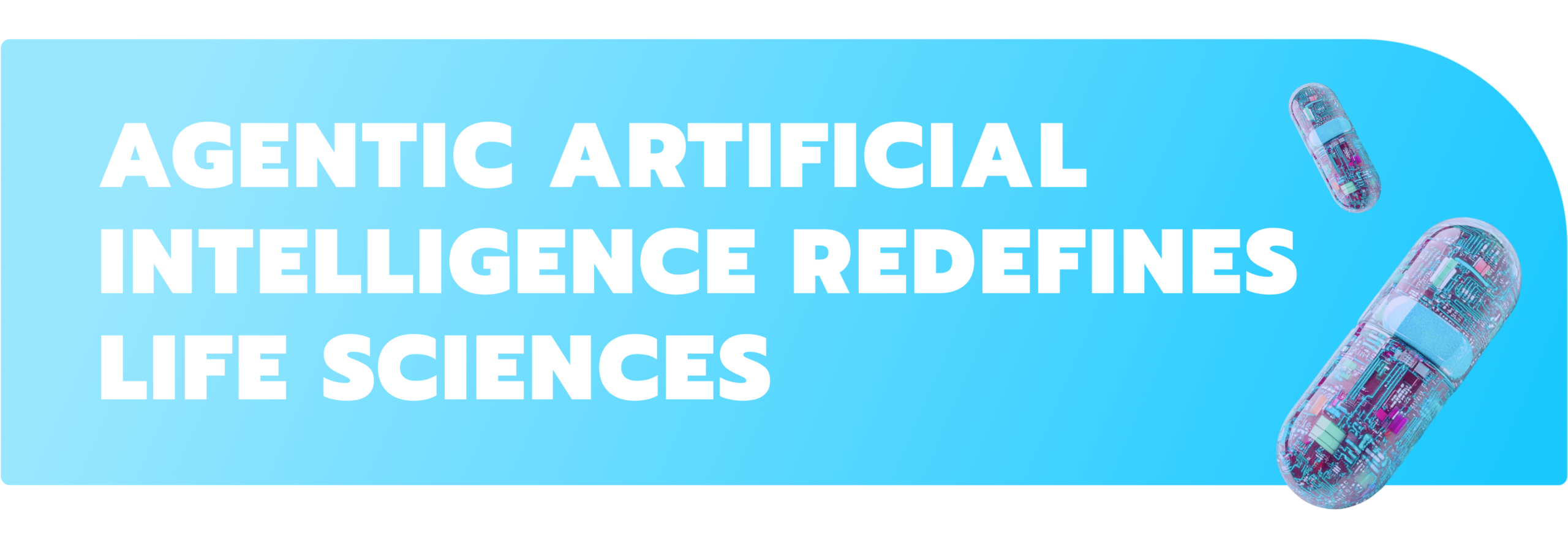
Agentic artificial intelligence redefines life sciences
The pharmaceutical sector is projected to grow at a compound annual growth rate (CAGR) of 42.68%, from USD 3.05 billion in 2024 to USD 18.06 billion by 2029. Technological advancements in AI for clinical trials, drug discovery, and operational efficiency are the key drivers behind this rapid expansion.

Chart 1: AI in Pharmaceutical Market Size (2024—2029)
By 2027, Gartner predicts that 30% of top life sciences organizations will leverage generative AI-generated synthetic data to enhance their digital twin initiatives, revolutionizing how organizations use data to simulate and refine drug development processes. This technology will augment existing datasets and significantly improve in silico modeling. Additionally, non-technical barriers, such as poor culture integration and governance gaps, are expected to account for 40% of generative AI project failures, highlighting the need for robust strategies and adoption frameworks to fully capitalize on AI innovations.
One of the most common applications of AI is agents. Since agentic AI is the new buzzword, it’s no surprise that it is also making an impact in pharma, especially in light of the changes COVID-19 has brought to the industry. Just five years ago, pharmaceutical companies were hesitant to adopt AI, but everything has shifted with the increasing need to provide more efficient customer service and support.
However, there’s a key distinction between generative AI and AI agents. While generative AI is useful for language-based tasks, its applications are limited. AI agents, on the other hand, are multifunctional. For example, they can enhance end-to-end planning and execution processes, which typically take anywhere from six months to a year and a half to complete. AI agents can reduce this time frame to as little as four or five months.
How is this possible? First, there’s no need to manually analyze spreadsheets (which, by the way, can take months!). In just a few days, brand managers can evaluate AI-generated scenarios that assess the effectiveness of broadcast, digital, and in-person campaigns. These recommendations include thorough justifications and anticipated outcomes, resulting in faster and more informed decision-making.
Secondly, agentic AI impacts provider segmentation and targeting by integrating various data streams, including practice features, patient demographics, and behavioral patterns. This data enables the creation of more accurate segmentation models much faster, with continuous updates based on real-time data. This marks a significant advancement over previous methods.
Additionally, agentic AI revolutionizes field force planning by instantly optimizing resource allocation, territory structure, and sales force size. Thousands of variables are evaluated in real-time to adapt dynamically to market shifts, including drive duration, account value, and representational capacities. This allows pharma companies to sustain productivity throughout the year and ensure that resources are used efficiently.
One important point to note, however, is that while agents play a key role in process automation, service providers should remain the final decision-makers. For instance, human strategists still determine market positioning and strategic investments, even though AI agents can quickly assess market data and recommend resource allocation.
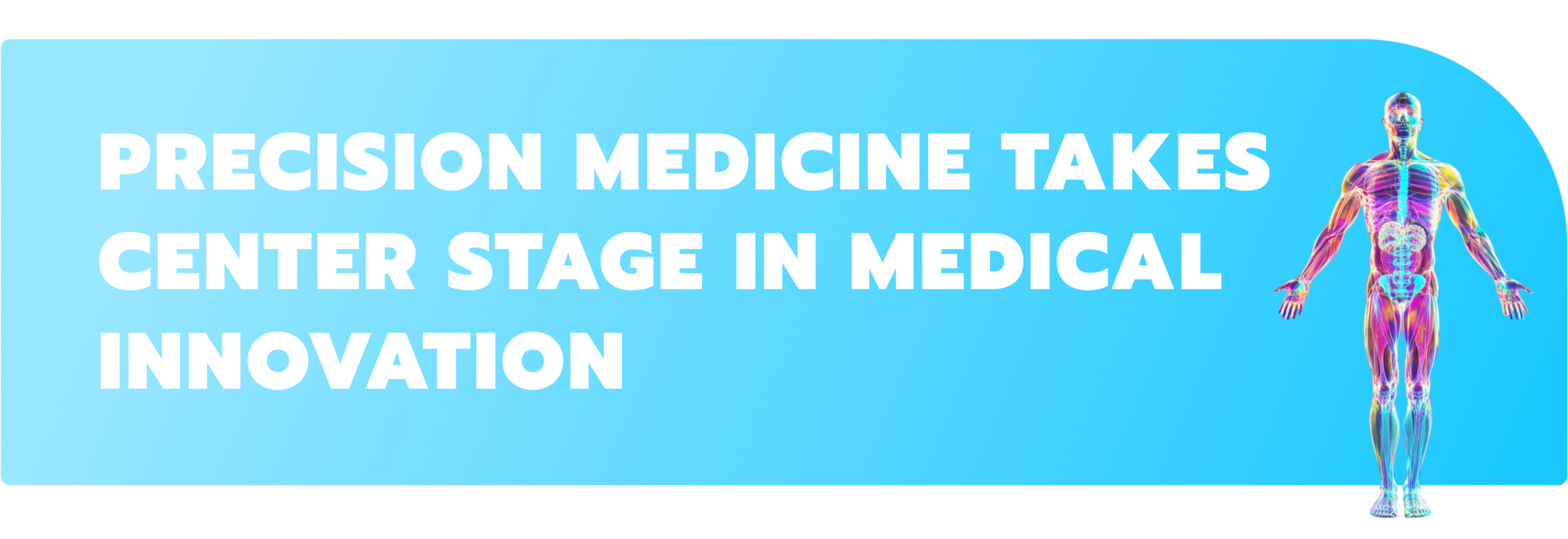
Precision medicine takes center stage in medical innovation
First of all, let’s begin with a definition. The Precision Medicine Initiative defines precision medicine as “an emerging approach for disease treatment and prevention that takes into account individual variability in genes, environment, and lifestyle for each person.” With this method, medical professionals and researchers will be able to more precisely forecast which preventative and treatment approaches for a certain illness will be effective for specific populations.
This key trend for 2025 radically rethinks healthcare delivery. Instead of a one-size-fits-all approach, it focuses on therapies tailored to each patient’s genetic composition, environment, and lifestyle. Rapid advances in biomarker discovery, genetic sequencing, and AI-driven analytics are driving this innovation, allowing practitioners to provide highly targeted treatments.
In oncology, precision medicine enables physicians to identify the specific mutations causing cancer in a patient’s tumor, facilitating treatments like immunotherapies that enhance the body’s immune response to cancer cells, or targeted therapeutics (e.g., HER2 inhibitors for breast cancer). Compared to traditional chemotherapy, these personalized treatments improve efficacy while significantly reducing side effects.
The potential of precision medicine is further enhanced by AI and machine learning. These technologies are the rockstars of data analytics. They enable analysis of enormous datasets, including genomic and electronic health records, to find trends and forecast treatment outcomes. AI can reduce trial-and-error prescribing and improve results by stratifying patients into groups most likely to benefit from a new treatment.
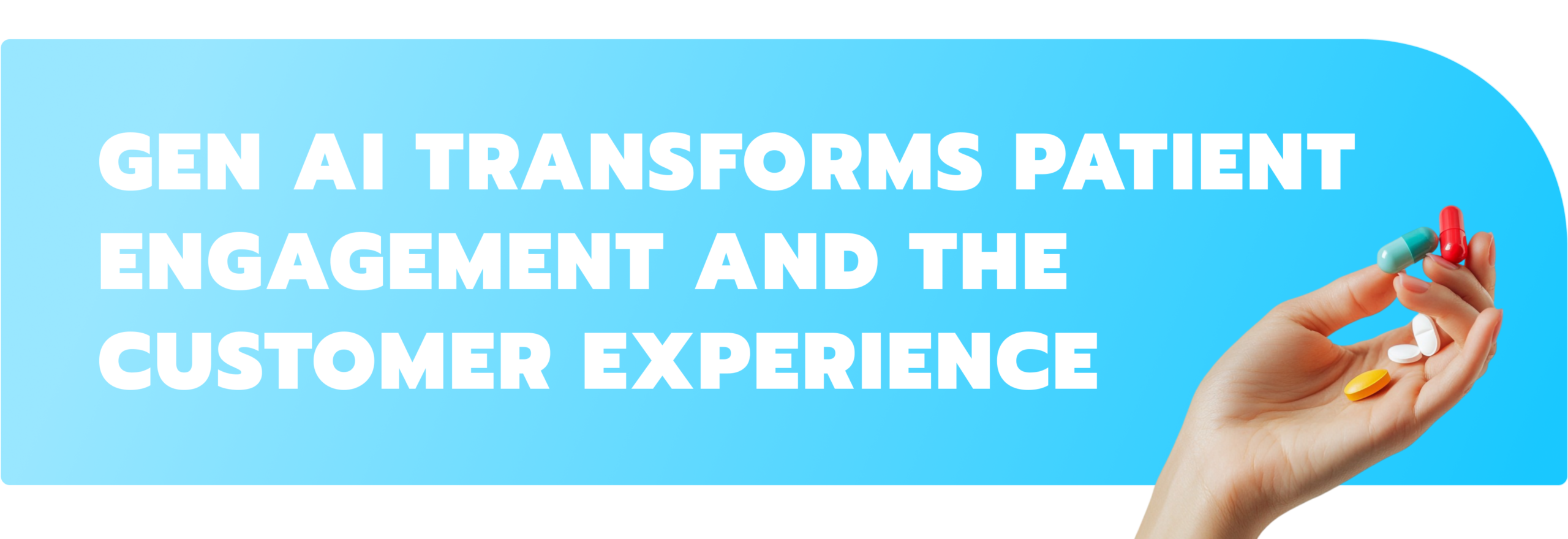
Gen AI transforms patient engagement and the customer experience
Efficient provider-patient communication is the cornerstone of the healthcare and pharmaceutical industry. Those pharma leaders who want to stay on top of the market must prioritize digital technologies that streamline communication, foster patient engagement, and deliver personalized experiences. This is where Gen AI takes center stage.
Its use cases are virtually limitless. AI-driven chatbots are gaining momentum. By analyzing customer data, they can efficiently answer patient questions, provide notifications for taking medicine, and even offer personalized health recommendations. Plus, it can be used to communicate the effects of prescribed medicine in a clear and understandable way, explain the nuances of a clinical trial, and provide culturally relevant educational materials, such as films or booklets, tailored to the language and health literacy of various regions. Interestingly, this technology can also be used to suggest treatments or health plans concerning cultural norms and religion-based dietary restrictions, ensuring all patients feel heard and respected.






